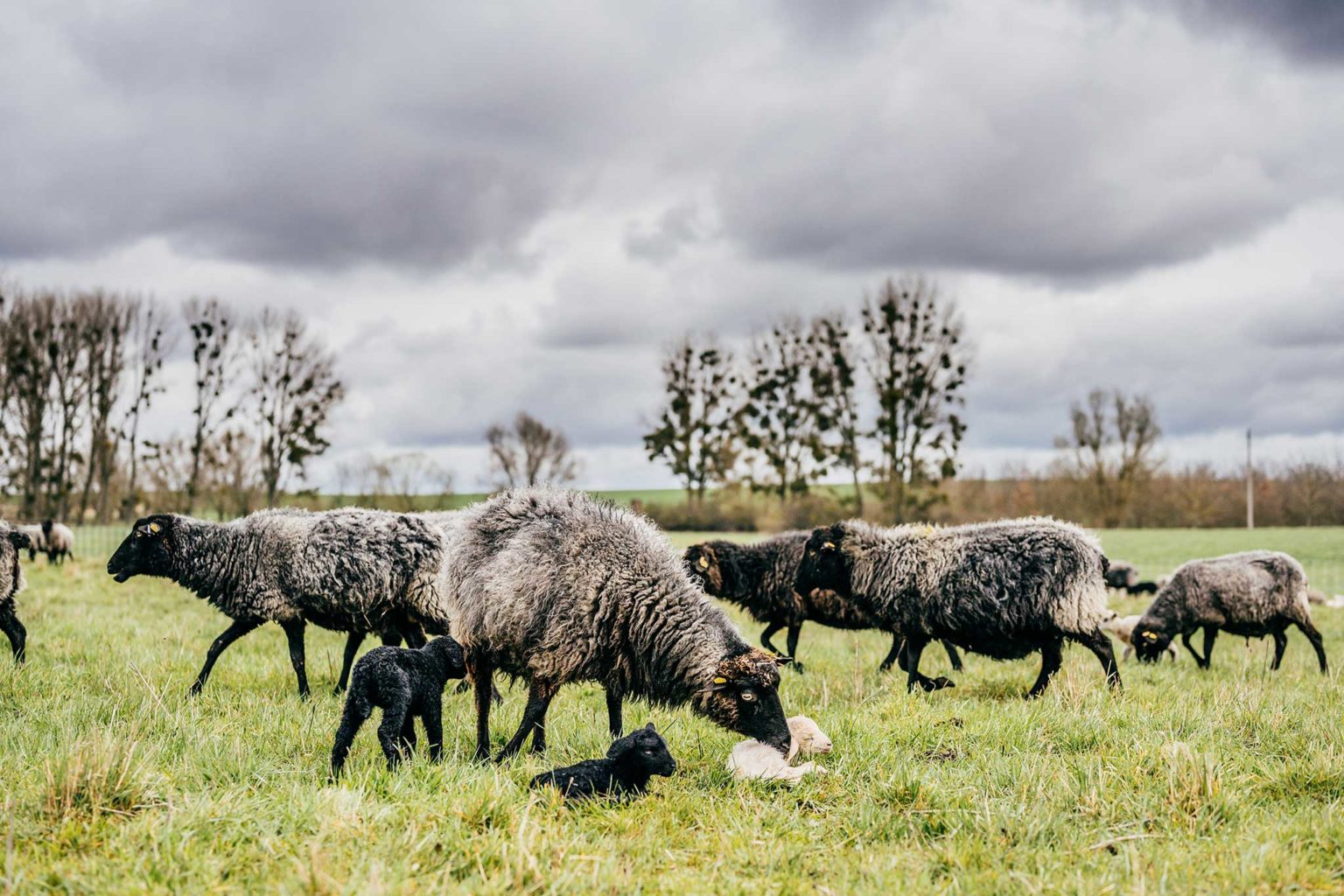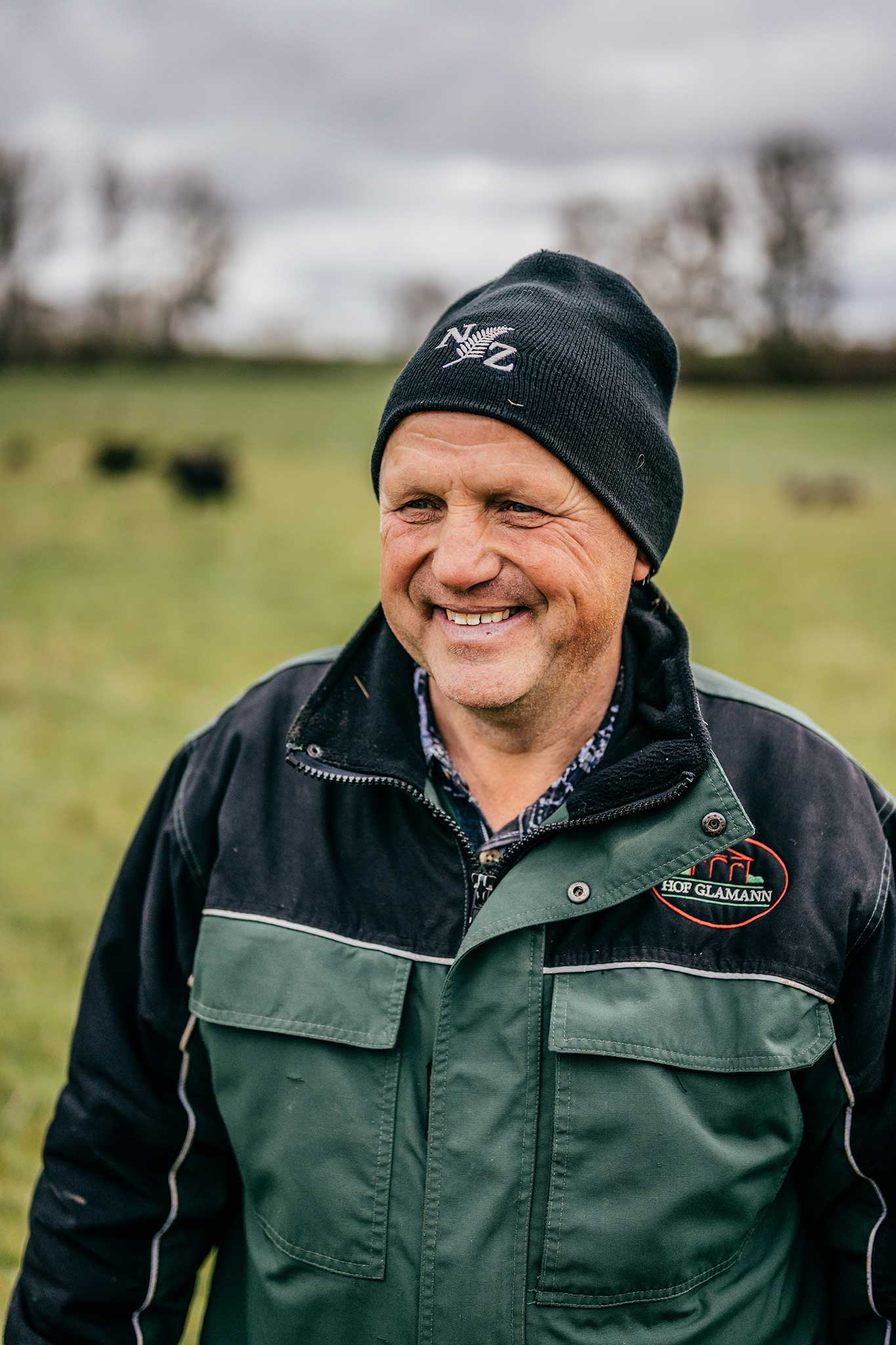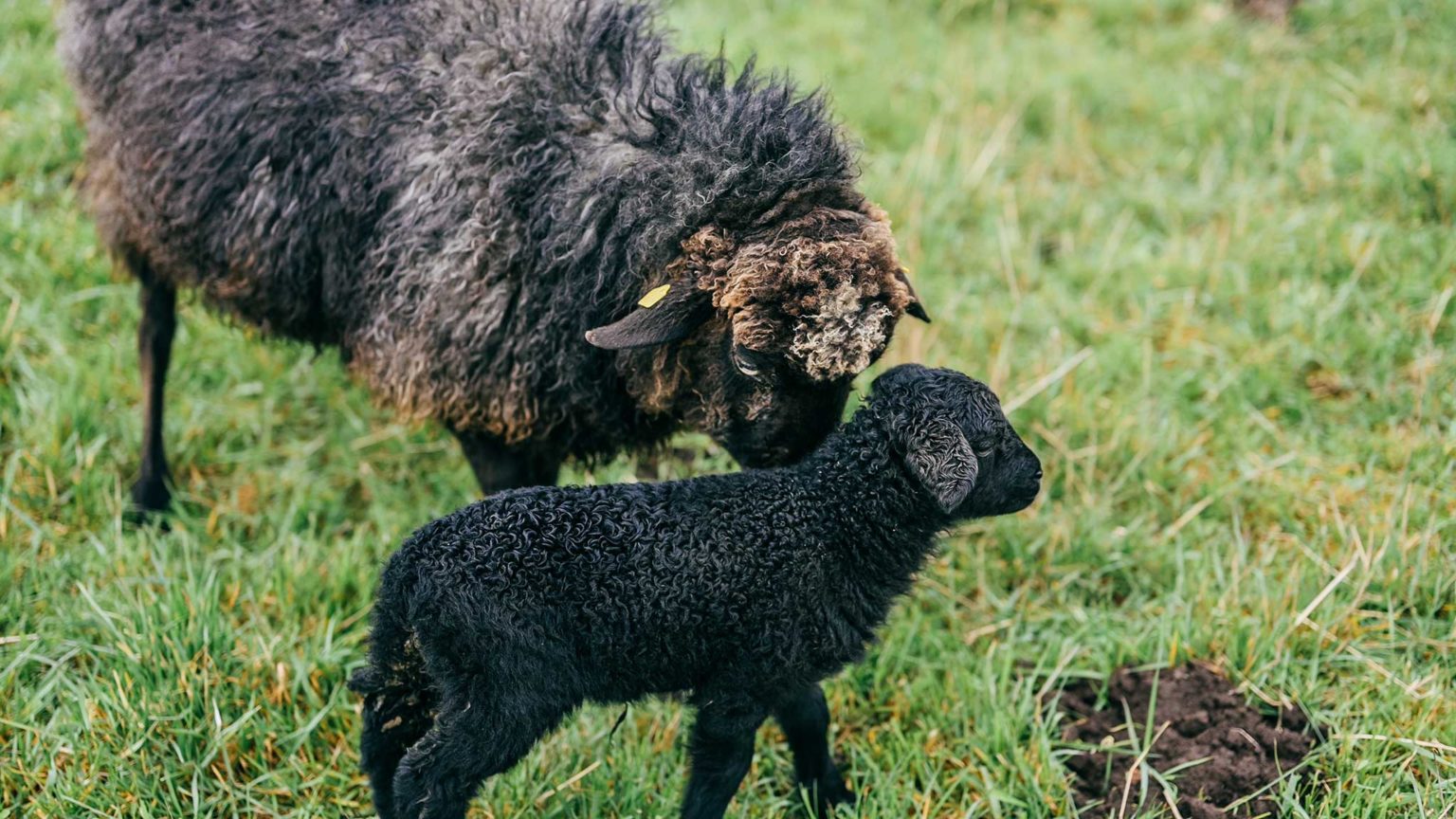
Hartmut Glamann
Grey clouds drift in the sky above the sheep pasture in Möllenhagen, Mecklenburg, on this Monday in April. The harsh "kjack" of jackdaws in the neighbouring marsh mingles with the "mäh" and "bäh" of sheep. Otherwise, only the wind can be heard.
Hartmut Glamann, a shepherd since 2007, makes his daily inspection walk through one of his sheep flocks. It's lambing season, and he has to be careful that all the lambs are born as healthy and smoothly as possible. This is because the ravens in the area have attacked ewes/dams and lambs far too often when they were weakened after birth.
This year, however, something is different; namely, last fall a mouflon ram joined the Pomeranian sheep dams/ewes and mated with some of them. The lambs that resulted from this action, however, are a challenge - for the Pomeranian sheep as well as for the shepherd. The young animals noticeably carry the energy and strength of their father. Immediately after birth, they are already much more active on their thin little legs than the pure Pomeranian lambs. As if stung by a tarantula, they chase across the pasture and probably upset the other animals somewhat in the long run. "We'll have to keep a close eye on that," says Hartmut Glamann. But somehow this crossbreed also excites him because visually they are something very special.
The trained agro technician has really fallen in love with the Pomeranian land sheep. It was important to him when he started his sheep farm that he wanted to have a breed of sheep that not everyone has. Almost 15 years ago, he started grazing his land with 17 sheep now his flock includes about 400 Pomeranian ewes, some meat sheep and a few crossbreds.
With them, he maintains his own green areas and areas of farmers who only farm and do not keep animals all year round. However, Hartmut Glamann does not engage in classic landscape maintenance.

As a result, he does not receive any premiums for the areas. He hopes that the grazing animal premium will soon be paid out in Mecklenburg-Western Pomerania as well. Otherwise, the sheep flocks would become fewer and fewer in the future. There are still many older shepherds, but young people are less enthusiastic to take up the shepherd profession. Through the grazing animal premium, a shepherd would receive 30 Euros per sheep and goat; this is the only money that directly reaches the shepherd.

"WHEN I STARTED WITH THE SHEEP, I WAS ONE OF THE FEW WHO INCREASED. ALL THE OTHERS CUT BACK. BUT IT ONLY WORKS ON THE BASIS OF NUMBERS. BECAUSE ONE POMERANIAN LAMB RESULTS IN APPROX. 30.- EUR LESS THAN A MEAT SHEEP, BECAUSE THEY HAVE DARKER MEAT. AND NOT EVERYONE LIKES THAT. THAT'S WHY I HAVE TO CROSS SOME OF THE ANIMALS WITH MEAT SHEEP, SO THAT THE LAMBS BRING MORE REVENUE."
THE CHALLENGE
Since the wolves began spreading again in Germany, - in addition to low wages keeping sheep has become an even greater challenge. Hartmut Glamann's flocks are regularly on the outskirts of Müritz National Park, which is home to two wolf packs. The sheep at all locations have already had several wolf encounters. Sometimes he sees it on the game cameras or notices it because the flock is wildly restless the next morning.
Last year he got new netting through a grant, a new type of fence that has fewer wires and wider spacing between them. The nets are light and not as susceptible to wind as the previous ones. Reduced wires mean there's more power on them.
"It’s quite a challenge, building the fences so the wolf can't get in. I don't have guard dogs in any herds because their costs are just too high, so I have to do without. I just don't know how much longer."
WHY NORDWOLLE?
A few years ago, wool buyers wouldn't buy the dark wool. "We'll take it, but you don't get anything for it." And then one day Marco was standing in Hartmut Glamann's yard. For his first northern wool trials, he needed Pomeranian wool, for which he was already paying 50 cents per kilo in the first year. So he loaded 200 kilos of wool into his VW bus and used it to develop his first prototypes of functional clothing. One year later, he readily needed more wool and the purchase price had increased steadily. At the moment, he just about has the shearers out only because the shepherd works with a Polish shearing team, another advantage is because of the large number of sheep, the price per sheep is also kept within limits. Without the price Nordwolle pays, the wool is a minus business.
"I would insanely like to have only Pomeranian sheep again, like in the first years. That was quite a picture, when there were 600 ewes with black lambs running around the area. But under the current conditions, it's not possible."

